Spatiotemporal Characteristics and Factors Influencing Urban Tourism Market Network in Western China: Taking Chengdu as an Example
Abstract
1. Introduction
2. Materials and Methods
2.1. Study Area
2.2. Methods
2.2.1. Inter-Annual Variation Index and Seasonal Concentration Index
2.2.2. Concentration Coefficient of Potential Tourists
2.2.3. ESDA Model
2.2.4. GWR Model
2.3. Data Source
2.4. Selection of Indexes
3. Results
3.1. Time Characteristics of Chengdu Tourism’s Network Attention
3.1.1. Inter-Annual Characteristics
3.1.2. Seasonal Characteristics
3.1.3. Characteristics of Holidays
3.2. Spatial Characteristics of Chengdu Tourism Network Attention
3.2.1. Spatial Concentration Trend
3.2.2. Differences in Provincial Distribution
3.2.3. Spatial Correlation
3.3. Impact Characteristics of Geographically Weighted Regression (GWR) Variables on Network Attention
3.3.1. Model Construction and Inspection
3.3.2. Impact of Various Variables on Network Attention
- (1)
- The number of mobile Internet users has the most significant and positive impact on Chengdu tourism’s network attention in all the provinces (autonomous regions and municipalities). In 2018, high values were observed in Shandong, Jiangsu, Shanghai, Zhejiang, Guangdong, Fujian, and Sichuan, whereas low values were observed in the north-west region, Tibet, inner Mongolia, and Heilongjiang. In 2021, the coefficients of Sichuan, Shaanxi, Hebei, and Henan increased, while those of Fujian and Yunnan decreased. From the perspective of time, the regression coefficient of the number of mobile Internet users also increased, and the impact intensity gradually increased.
- (2)
- The number of people in higher education per 100,000 people also has a significant impact on Chengdu tourism’s network attention in all the provinces (autonomous regions and municipalities). In 2018, high values were observed in Beijing, Shandong, Jiangsu, Shanghai, Zhejiang, Guangdong, and Fujian, whereas low values were observed in north-west China, Tibet, inner Mongolia, and Heilongjiang. In 2021, the coefficients for Sichuan, Chongqing, Shaanxi, and Hubei increased. Provinces (autonomous regions and municipalities) with high regression coefficients comprised abundant higher education resources and a large number of college students. From the perspective of time, the extreme value of the regression coefficient expanded by 2.30 times over the three years, indicating that the spatial difference in the impact of education level in various provinces (autonomous regions and municipalities) has widened further.
- (3)
- Per capita GDP has a significant and positive impact on the attention given to Chengdu tourism’s network attention in all provinces (autonomous regions and municipalities). In 2018, high values were observed in Beijing, Jiangsu, Shanghai, Zhejiang, and Guangdong, whereas low values were observed in the north-west region, Tibet, inner Mongolia, and Heilongjiang. The coefficient of the “Hu Line” in the south-east area is significantly higher than that in the north-west region. From the perspective of time, the impact intensity of GDP per capita gradually increased. In 2021, the regression coefficient of Chongqing was higher than it was in 2018, while that in other regions remained unchanged.
- (4)
- The urbanization rate also has a significant impact on Chengdu tourism’s network attention in each province (autonomous regions and municipalities). However, its regression coefficient is smaller than those of GDP per capita, the number of mobile Internet users, and the number of people in higher education per 100,000 people. In 2018, high values were observed in Beijing, Shandong, Jiangsu, Shanghai, Zhejiang, Guangdong, and Tianjin, while low values were observed in the north-west region, Tibet, and Heilongjiang. In 2021, the value increased in Liaoning, Hubei, and Fujian.
- (5)
- Passenger throughput had the lowest impact on Chengdu tourism’s network attention in all provinces (autonomous regions and municipalities). In 2018, high values were observed in Beijing, Jiangsu, Shanghai, Zhejiang, and Guangdong, whereas low values were observed in the north-west, south-west, north-east, and central regions. In 2021, the regression coefficients for Tianjin, Chongqing, Yunnan, and Hainan decreased, while that of Shandong increased. From the perspective of time, the extreme value of the regression coefficient of passenger throughput reduced, and the impact intensity gradually weakened. A high regression coefficient value appeared in economically developed regions and the main tourist source markets in Chengdu.
4. Discussion
4.1. Analysis of Driving Mechanism
4.2. Limitations
5. Conclusions
Author Contributions
Funding
Institutional Review Board Statement
Informed Consent Statement
Data Availability Statement
Acknowledgments
Conflicts of Interest
References
- Plog, S. Why destination areas rise and fall in popularity: An update of a Cornell Quarterly classic. Cornell Hotel. Restaur. Adm. Q. 1974, 14, 55–58. [Google Scholar] [CrossRef]
- Wu, B.; Tang, J.; Huang, A.; Zhao, R.; Qiu, F.; Fang, F. A study on the choice behavior of Chinese urban residents’ tourist destination. Acta Geogr. Sin. 1997, 63, 3–9. [Google Scholar]
- Zhang, H.; Ying, S.; Wu, M. Topic identification and asymmetry effects of tourists’ perceived image of cultural tourism destinations: A case of canal city Shaoxing. Sci. Geogr. Sin. 2022, 42, 2131–2140. [Google Scholar]
- Jia, Y.; Zhu, M.; Zhang, J.; Sun, F. Effect of tourism destination perception on tourist citizenship behaviors An empirical study from Shandong and Qinghai provinces. J. Arid Land Resour. Environ. 2023, 37, 186–193. [Google Scholar]
- Long, C.; Shan, J.; Chai, X. Antecedents of Residents’Brand Ambassadorial Behavior for Tourism Destination:An Empirical Study Based on MOA Model. Econ. Probl. 2023, 96–105. [Google Scholar] [CrossRef]
- Wang, M.; Chen, X.; Lin, Y.; Zhu, L. Study on the influence of sports event experience on tourism destination brand: A case of Guangzhou Marathon. Tour. Trib. 2022, 37, 39–51. [Google Scholar]
- Huang, G.I.; Wang, X.; Wong, I.A. A Research on the Evolution of Destination Research Themes, Hot Topics and Trends: A Scientific Knowledge Mapping Study. Tour. Sci. 2022, 36, 106–124. [Google Scholar]
- Zheng, P.; Liu, Z.; Chen, J.; Xi, J.; Li, J. Evaluation of tourist destination competitiveness on Qinghai–Tibet Plateau: An county perspective and obstacle analysis. J. Arid Land Resour. Environ. 2023, 37, 177–185. [Google Scholar]
- Hui, T.-K.; Chi, C.Y. A study in the seasonal variation of Japanese tourist arrivals in Singapore. Tour. Manag. 2002, 23, 127–131. [Google Scholar] [CrossRef]
- Christine, L. The major determinants of Korean outbound travelto Australia. Math. Comput. Simul. 2004, 64, 477–485. [Google Scholar]
- Tang, J.C.; Sriboonchitta, S.S.; Yuan, X.Y. Forecasting inbound tourism demand to China using timeseries models and belief functions. Econom. Risk 2014, 583, 329–341. [Google Scholar]
- Reitsamer, B.F.; Brunner-Sperdin, A.; Stokburger-Sauer, N.E. Destination attractiveness and destination attachment: The mediating role of tourists’ attitude. Tour. Manag. Perspect. 2016, 19, 93–101. [Google Scholar] [CrossRef]
- Kotus, J.; Rzeszewski, M.; Ewertowski, W. Tourists in the spatial structures of a big Polish city: Development of an uncontrolled patchwork or concentric spheres? Tour. Manag. 2015, 50, 98–110. [Google Scholar] [CrossRef]
- Jin, C.; Lu, Y.; Fan, L. Research on spatial structure of domestic tourism source markets of Jiangsu. Econ. Geogr. 2010, 30, 2104–2108. [Google Scholar]
- Yang, X.; Ma, X. A spatial analysis and construction of domestic tourism of “Big Xi’an Tourism Circle”. Geogr. Res. 2004, 22, 695–704. [Google Scholar]
- Wei, G.; Yixue, L.; Hong, G. Research on inbound tourism market of Liaoning province based on tourism background trend line. Inf. Comput. Appl. 2012, 307, 783–788. [Google Scholar]
- Soshiroda, A.K. Inbound tourism policies in Japan from 1859 to 2003. Ann. Tour. Res. 2005, 32, 1100–1120. [Google Scholar] [CrossRef]
- Erdogan, K.; Galip, A. An analysis of seasonality in monthly per person tourist spending in Turkish inbound tourism from a market segmentation perspective. Tour. Manag. 2007, 28, 227–237. [Google Scholar]
- Lu, L. On the regional structure of Huangshan’s domestic tourist source market. Hum. Geogr. 1989, 3, 70–72. [Google Scholar]
- Liu, Z.; Gu, Z.; Wang, N.; Li, H.; Gu, J. The influence of leisure time constraint on spatial structure of domestic tourist market of Dr. Sun Yat-sen’s Mausoleum. Geogr. Res. 2013, 32, 1737–1746. [Google Scholar]
- Shao, Y.; Huang, S.; Wang, Y.; Li, Z.; Luo, M. Evolution of international tourist flows from 1995 to 2018: A network analysis perspective. Tour. Manag. Perspect. 2020, 36, 100752. [Google Scholar] [CrossRef]
- Öörni, A. Consumer Objectives and the Amount of Search in Electronic Travel and Tourism Markets. J. Travel Tour. Mark. 2004, 17, 3–13. [Google Scholar] [CrossRef]
- Rodríguez, J.; Semanjski, I.; Gautama, S.; Van de Weghe, N.; Ochoa, D. Unsupervised Hierarchical Clustering Approach for Tourism Market Segmentation Based on Crowdsourced Mobile Phone Data. Sensors 2018, 18, 2972. [Google Scholar] [CrossRef]
- Jing, X.; Yang, Y.; Cheng, J. Tracking discrepancies between expected and actual flows of tourists in an urban destination: An application of user-generated data. J. Hosp. Tour. Manag. 2022, 52, 29–38. [Google Scholar]
- Ding, Z.; Ma, F.; Zhang, G. Spatial differences and influencing factors of urban network attention by Douyin fans in China. Geogr. Res. 2022, 41, 2548–2567. [Google Scholar]
- Zhao, C.; Yang, Y.; Wu, S.; Wu, W.; Xue, H.; An, K.; Zhen, Q. Search trends and prediction of human brucellosis using Baidu index data from 2011 to 2018 in China. Sci. Rep. 2020, 10, 5896. [Google Scholar] [CrossRef]
- Flanagan, R.; Kuo, B.; Staller, K. Utilizing Google Trends to assess worldwide interest in irritable bowel syndrome and commonly associated treatments. Dig. Dis. Sci. 2021, 66, 814–822. [Google Scholar] [CrossRef] [PubMed]
- Aaronson, D.; Brave, S.A.; Butters, R.A.; Fogarty, M.; Sacks, D.W.; Seo, B. Forecasting unemployment insurance claims in realtime with Google Trends. Int. J. Forecast. 2022, 38, 567–581. [Google Scholar] [CrossRef]
- Ma, L.; Sun, G.; Huang, Y.; Zhou, R. Temporal and spatial correlation analysis of urban domestic passenger flow and tourist network attention. Econ. Geogr. 2011, 31, 680–685. [Google Scholar]
- Huang, X.; Zhang, L.; Ding, Y. Research on the relationship and prediction between Baidu index and tourist volume in tourist attractions––taking the Forbidden City of Beijing as an example. Tour. Trib. 2013, 28, 93–100. [Google Scholar]
- Zhang, G.; Yuan, H. Spatio-Temporal Evolution Characteristics and Spatial Differences in Urban Tourism Network Attention in China: Based on the Baidu Index. Sustainability 2022, 14, 13252. [Google Scholar] [CrossRef]
- Lai, J. The Development Path of Classic Red Tourism Scenic Spots: From the Perspective of the Evolution of Network Attention in Time and Space. Soc. Sci. 2022, 37, 44–51. [Google Scholar]
- Yuan, L.; Sun, G. Research on the spatial-temporal dynamic evolution and influencing factors of outbound tourism network attention: A case study on Thailand. J. Zhejiang Univ. 2023, 50, 1–15. [Google Scholar]
- Han, J.; Yang, Y.; Zhen, L. Research on the factors influencing network attention to Pingyao Ancient City under the impact of COVID-19. J. Arid Land Resour. Environ. 2023, 37, 203–208. [Google Scholar]
- Luo, W.; Wang, F.; Ding, Z. Spatial Difference and Influencing Factors of Douyin’s Network Attention of Red Scenic Spots in China. Econ. Geogr. 2023, 43, 198–210. [Google Scholar]
- Liang, X.; Ma, L. The Spatial Pattern and Formation Mechanism of Domestic Tourist Flow Circulations—Analysis Based on Network Attention Data. Tour. Trib. 2023, 38, 1–12. [Google Scholar]
- Sun, Y.; Zhang, H.; Liu, P.; Zhang, J. Research on the daily tourist volume forecast of tourist attractions based on tourists’ network attention–taking Baidu index of different clients as an example. Hum. Geogr. 2017, 32, 152–160. [Google Scholar]
- Li, H.; Li, D.; Dong, X.; Xu, N. Research on the spatial pattern of distribution and network attention of 5A scenic spots in China. J. Arid Land Resour. Environ. 2019, 33, 178–184. [Google Scholar]
- Zou, Y.; Lin, W.; Zheng, X. Spatial and temporal characteristics of tourism security network attention and its influencing factors. Tour. Trib. 2015, 30, 101–109. [Google Scholar]
- Liang, L.; Fu, H.; Li, J.; Li, B. Research on the spatiotemporal dynamic evolution and influencing factors of the network attention of the online celebrity city: Taking Xi’an as an example. Sci. Geogr. Sin. 2022, 42, 1566–1576. [Google Scholar]
- Wang, C.; Lu, C.; Ba, D.; Ma, B.; Qin, Z. The spatiotemporal evolution and influencing factors of the network attention of China’s representative ski resorts. J. Nat. Resour. 2022, 37, 2367–2386. [Google Scholar]
- Liu, H.; Hu, J.; Lv, L.; Zhang, H.; Cao, T. The impact of the COVID-19 on the spatial and temporal pattern of Wuhan tourism based on online attention. J. Arid Land Resour. Environ. 2023, 37, 194–202. [Google Scholar]
- Zhang, Y.; Ren, Y.; Liang, L. The temporal and spatial differences and influencing factors of the attention of China’s ice and snow tourism network–based on the empirical data of Baidu Index 2011–2020. World Geogr. Res. 2023, 33, 1–15. [Google Scholar]
- Xu, J.; Wang, W.; Du, J. The spatial and temporal differences of red tourism network attention patterns and influencing factors in the six central provinces. J. Chongqing Univ. 2023, 29, 1–16. [Google Scholar]
- Jing, E.; Guo, F.; Li, R.; Zhang, J.; Fu, X. Research on the network attention of Hebei A-level scenic spots based on Sina Travel Blog. Geogr. Geo-Inf. Sci. 2015, 31, 118–122. [Google Scholar]
- Li, Y.; Gong, G.; Zhang, F. Network Structure Features and Influencing Factors of Tourism Flow in Rural Areas: Evidence from China. Sustainability 2022, 14, 9623. [Google Scholar] [CrossRef]
- Wang, K.; Guo, F.; Li, R.; Fu, X. International attention and spatial pattern of Chinese tourist destinations based on Tripadvisor. Prog. Geogr. 2014, 33, 1462–1473. [Google Scholar]
- Gao, N.; Zhang, X.; Wang, L. Spatial and temporal characteristics and influencing factors of China’s red tourism network attention. J. Nat. Resour. 2020, 35, 1068–1089. [Google Scholar]
- Chen, J.; Becken, S.; Stantic, B. Harnessing social media to understand tourist travel patterns in muti-destinations. Ann. Tour. Res. Empir. Insights 2022, 3, 100079. [Google Scholar] [CrossRef]
- Pan, X.; Rasouli, S.; Timmermans, H. Investigating tourist destination choice: Effect of destination image from social network members. Tour. Manag. 2021, 83, 32–43. [Google Scholar] [CrossRef]
- Liu, P.; Xiao, X.; Zhang, J. Spatial Configuration and Online Attention: A Space Syntax Perspective. Sustainability 2018, 10, 221. [Google Scholar] [CrossRef]
- Wang, X.; Zhang, J.; Liu, P.; Wang, X.; Ding, L. A dynamic study on the spatial structure of urban tourist market from the perspective of big data: Taking Nanjing as an example. Resour. Dev. Mark. 2018, 34, 77–82. [Google Scholar]
- Ma, L.; Hu, R. Dynamic analysis of Zhangjiajie’s domestic tourist market structure: Based on network attention data. Yunnan Geogr. Environ. Res. 2018, 30, 49–56. [Google Scholar]
- Zhu, Q.; Li, Z.; Yang, X. An Improvement of Evaluating Method on Tourist Concentration Degree with Geographic Concentration Index. Tour. Trib. 2011, 26, 26–29. [Google Scholar]
- Liu, S.; Tian, J.; Lu, L. A case study of Shanghai Disneyland on spatial structure forecast for proposed scenic spot market: Modification and its application of gravity model. Acta Geogr. Sin. 2016, 71, 304–321. [Google Scholar]
- Fang, Y.; Xie, M. The Effect of Innovation Elements Agglomeration on Regional Innovation Output: Based on Chinese Provinces and Cities’s ESDA-GWR Analysis. Econ. Geogr. 2012, 32, 8–14. [Google Scholar]
- Zhang, Y.; Jin, H.; Gu, X.; Ye, L.; Shao, Q. The evolution of economic spatial pattern based on the impact of ESDA-GWR multivariate: Taking the urban agglomeration in the middle reaches of the Yangtze River as an example. Econ. Geogr. 2015, 35, 28–35. [Google Scholar]
- Ma, L.; Xiao, Y. The structure characteristics of domestic tourist flow network in typical urban dweller. Econ. Geogr. 2018, 38, 197–205. [Google Scholar]
- Singhal, K.; Feng, Q.; Ganeshan, R.; Sanders, N.R.; Shanthikumar, J.G. Introduction to the special issue on perspectives on big data. Prod. Oper. Manag. 2018, 27, 1639–1641. [Google Scholar] [CrossRef]
- Chen, X. The development trend and practical innovation of smart cities under the integration of new technologies. Front. Eng. Manag. 2019, 6, 485–502. [Google Scholar] [CrossRef]
- Xu, X.; Pratt, S. Social media influencers as endorsers to promote travel destinations: An application of self-congruence theory to the Chinese Generation Y. J. Travel Tour. Mark. 2018, 35, 958–972. [Google Scholar]
- Prayag, G.; Ryan, C. The relationship between the ‘push’ and ‘pull’ factors of a tourist destination: The role of nationality-an analytical qualitative research approach. Curr. Issues Tour. 2011, 14, 121–143. [Google Scholar] [CrossRef]
- Li, X.R.; Lai, C.; Harrill, R.; Kline, S.; Wang, L. When east meets west: An exploratory study on Chinese outbound tourists’ travel expectations. Tour. Manag. 2011, 32, 741–749. [Google Scholar] [CrossRef]
- Zhang, Z.; Rob, L.; Liu, T. Tourism importance perception, tourism motivation and demographic characteristics: An empirical study based on Hong Kong resident survey data. Tour. Sci. 2012, 26, 76–84. [Google Scholar]
- Yang, Y.; Sui, X.; Liu, Z. Research on the spatial evolution characteristics of China’s inter-provincial virtual tourism flow network structure. Prog. Geogr. 2022, 41, 1349–1363. [Google Scholar] [CrossRef]
- Yang, Y.; Sun, G. Spatial and temporal dynamic analysis of urbanization promoting China’s domestic tourism development. Econ. Geogr. 2013, 33, 169–175. [Google Scholar]
- Chen, X.; Li, Y.; Wang, Y.; Cai, S. Online popular city, traffic effect and tourism development. J. Manag. Sci. China 2022, 25, 1–22. [Google Scholar]
- Zhang, H.; Fu, X.; Cai, L.A.; Lu, L. Destination image and tourist loyalty: A meta–analysis. Tour. Manag. 2014, 40, 213–223. [Google Scholar] [CrossRef]
- Bloch, P.H.; Bruce, G.D. The leisure experience and consumer products: An investigation of underlying satisfactions. J. Leis. Res. 1984, 16, 74–88. [Google Scholar] [CrossRef]
- Hew, E.Y.T.; Jahari, S.A. Destination image as a mediator between perceived risks and revisit intention: A case of post–disaster Japan. Tour. Manag. 2014, 40, 382–393. [Google Scholar]
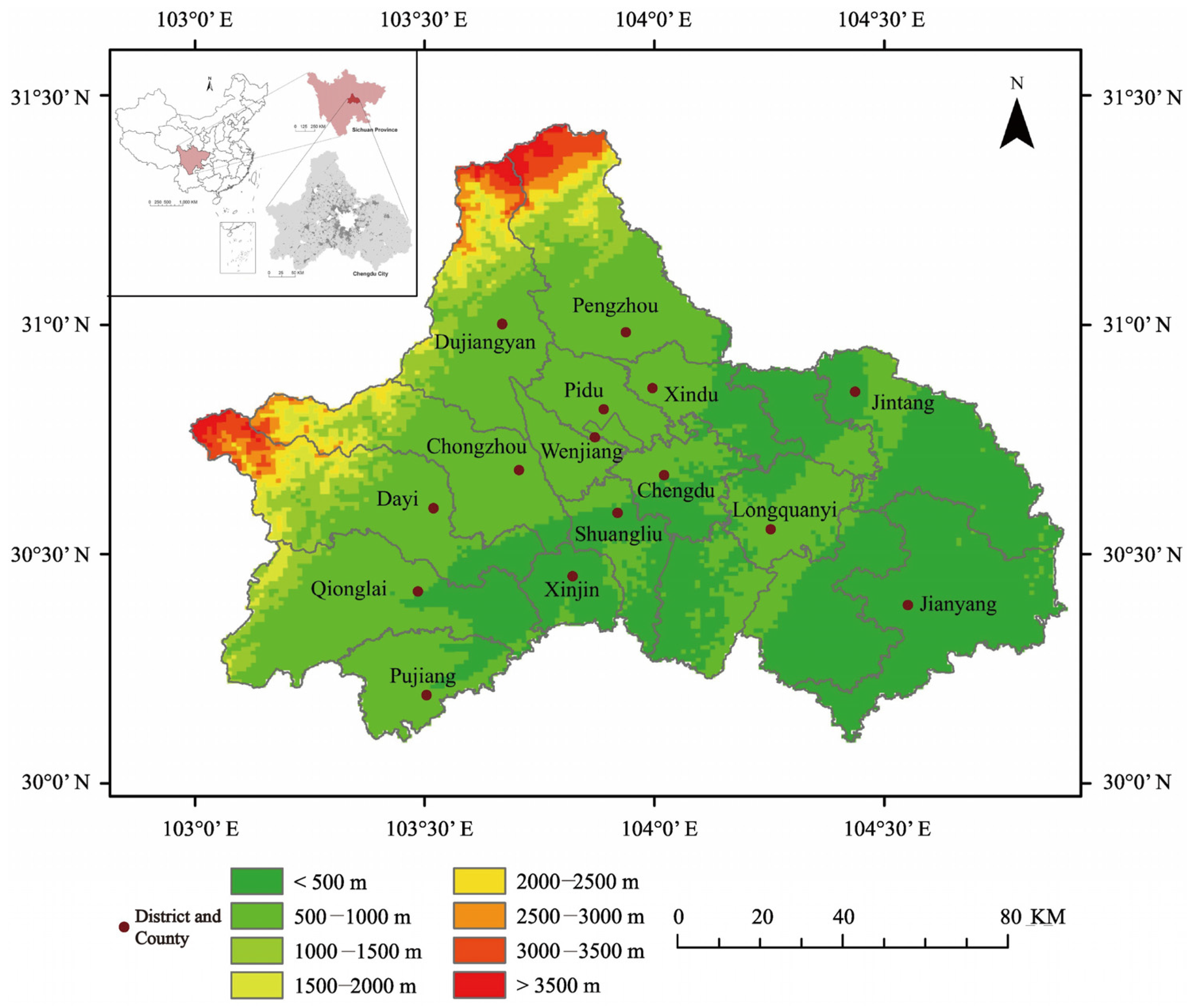


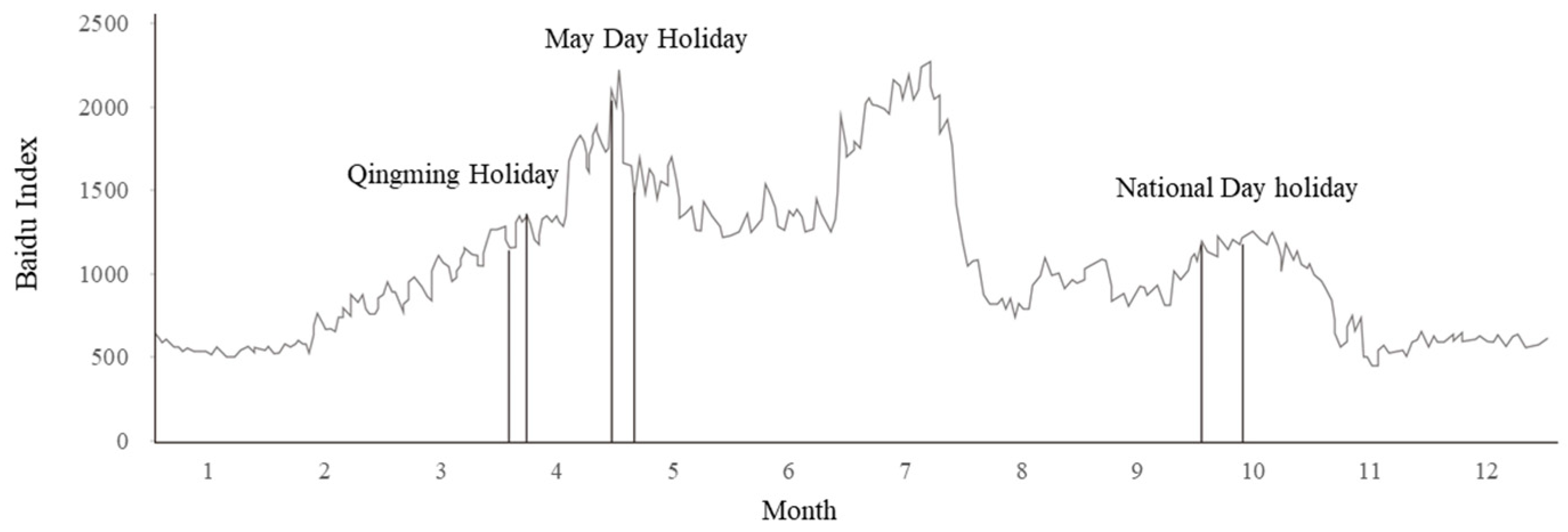
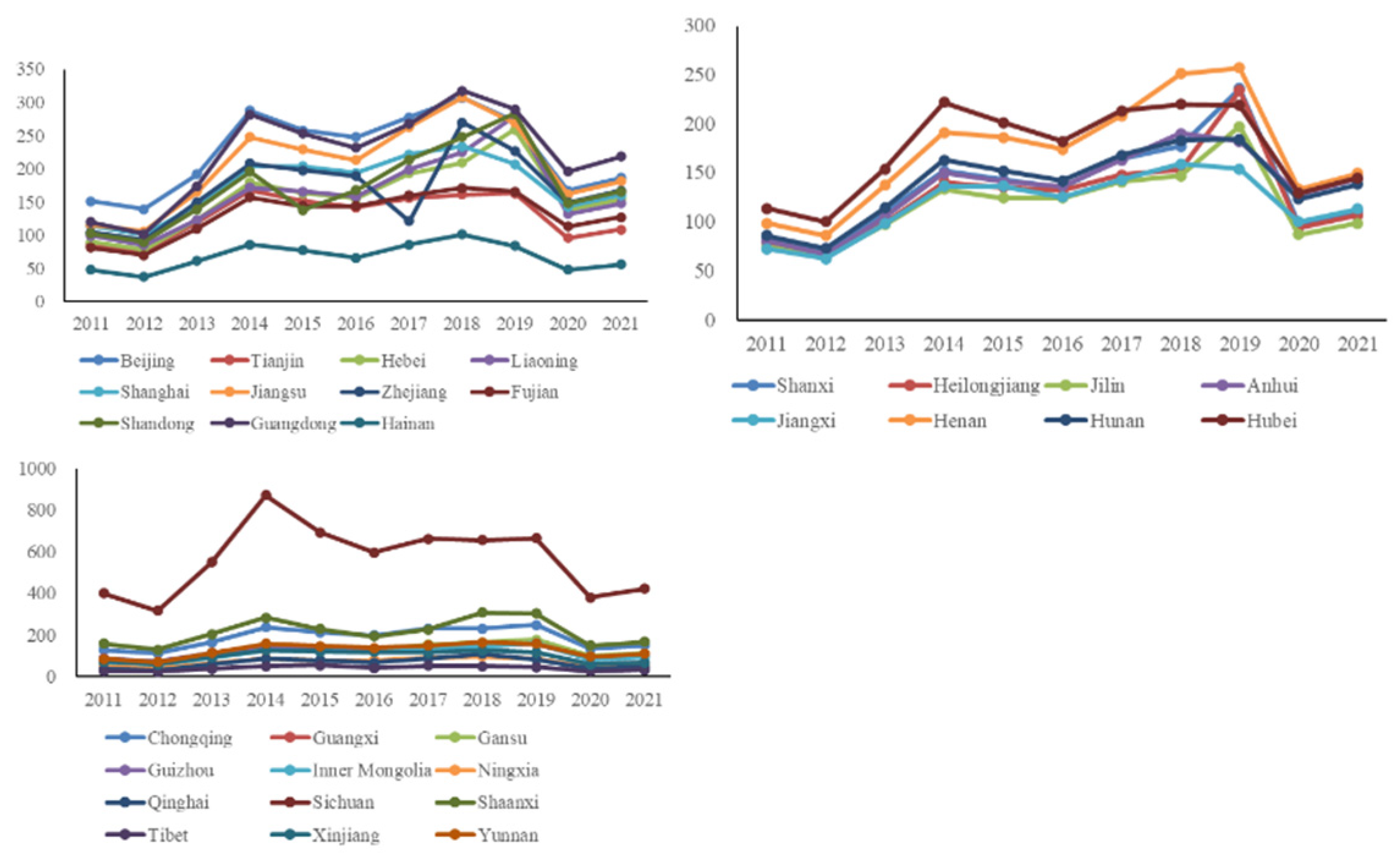

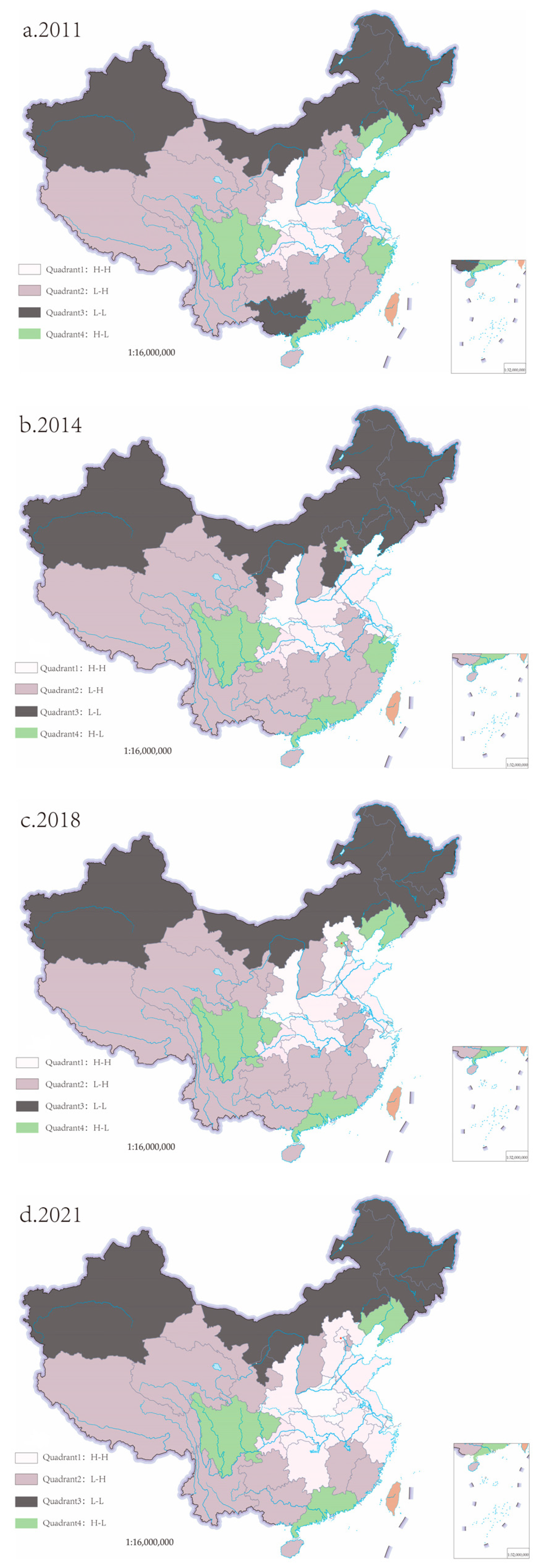
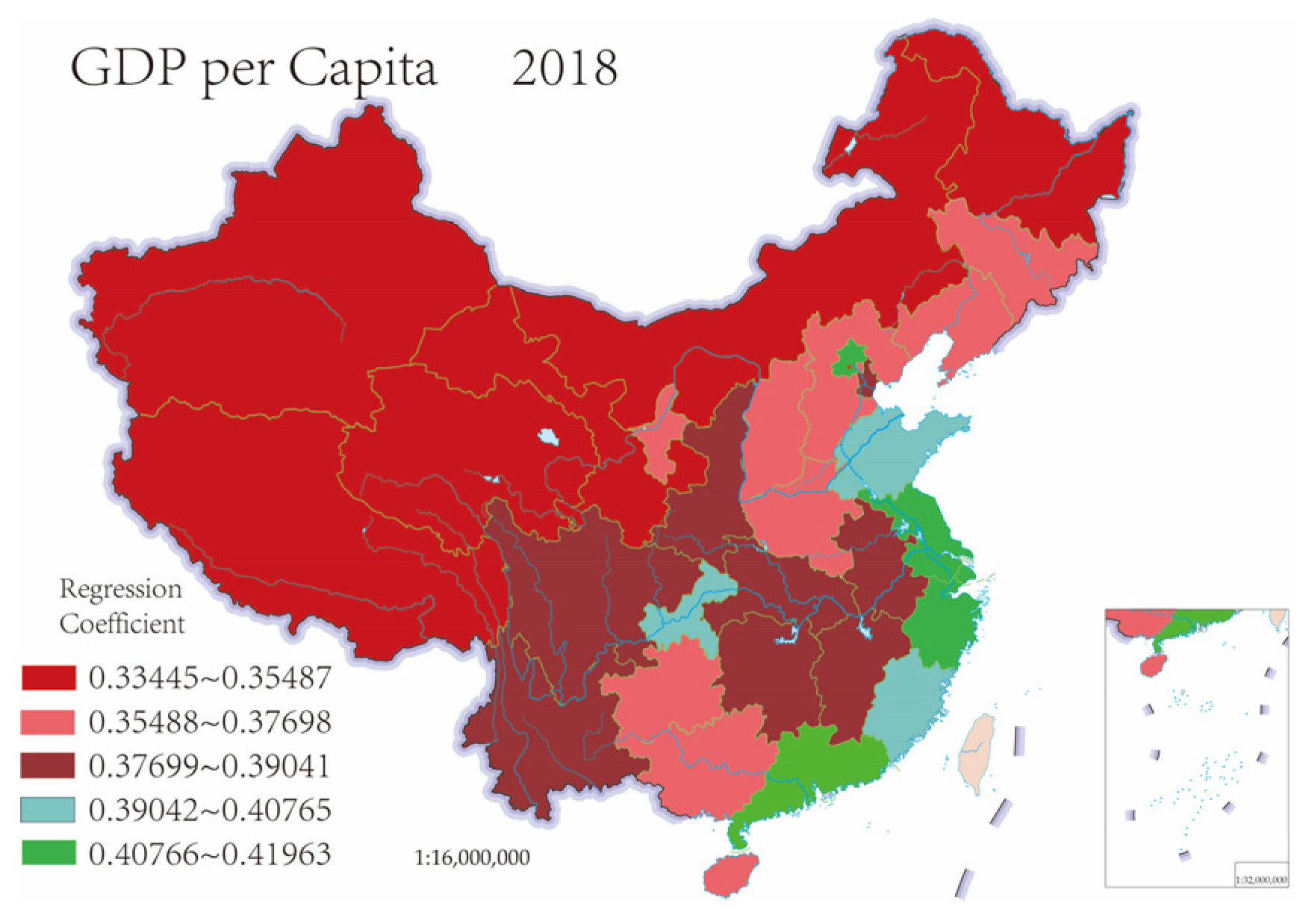
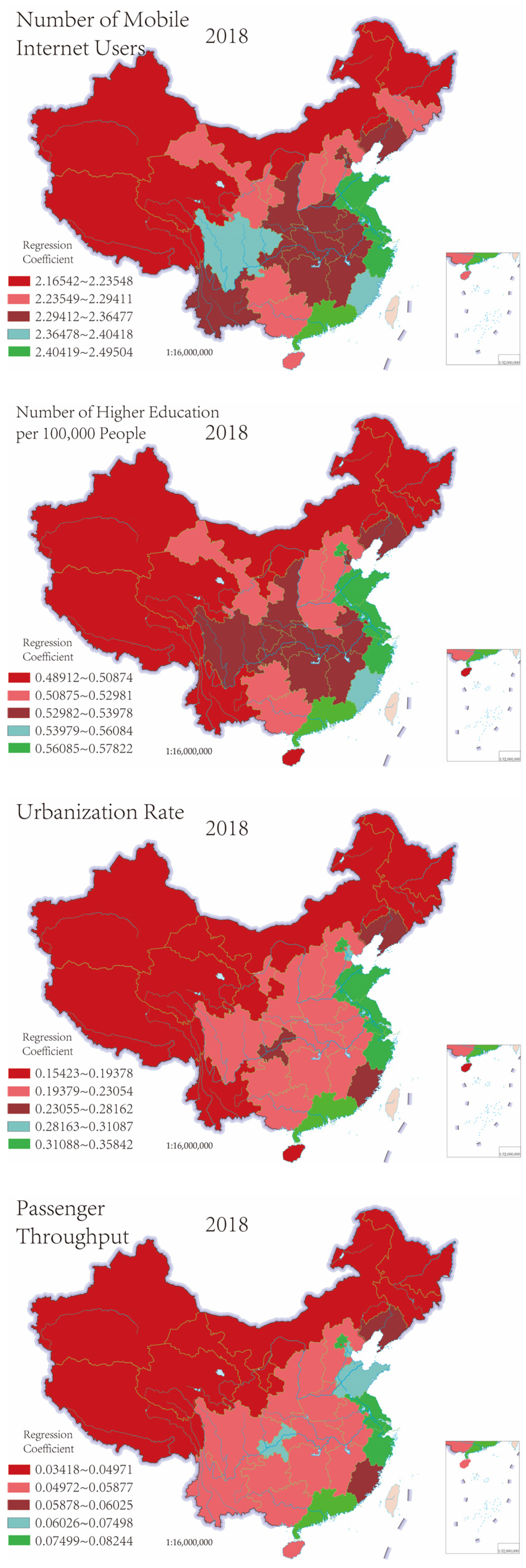
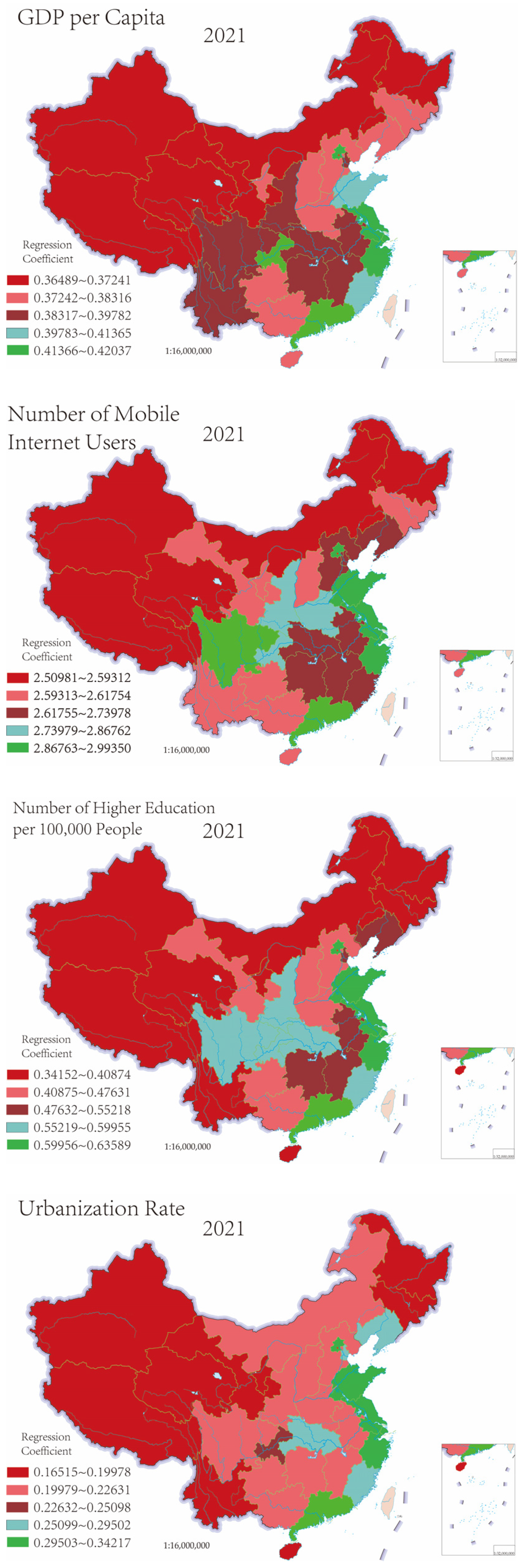

| Number | X1 | X2 | X3 | X4 | X5 | X6 |
|---|---|---|---|---|---|---|
| Name | Population at the end of the year | GDP per capita | Number of mobile internet users | Number of higher education per 100,000 people | Urbanization rate | Passenger throughput |
| connotation | Population size | Economic development level | Network development level | Education | Urbanization development level | Traveling population |
| 2011 | 2012 | 2013 | 2014 | 2015 | 2016 | 2017 | 2018 | 2019 | 2020 | 2021 | |
|---|---|---|---|---|---|---|---|---|---|---|---|
| G | 21.18 | 20.85 | 21.32 | 22.05 | 21.15 | 20.67 | 20.59 | 20.18 | 20.12 | 26.63 | 26.12 |
| 17.96 | |||||||||||
| ΔG | 3.22 | 2.88 | 3.36 | 4.09 | 3.19 | 2.71 | 2.63 | 2.22 | 2.16 | 8.67 | 8.16 |
| 17.95 | 16.06 | 18.68 | 22.80 | 17.77 | 15.09 | 14.62 | 12.35 | 12.01 | 48.27 | 45.43 | |
| Index | X1 | X2 | X3 | X4 | X5 | X6 | |
|---|---|---|---|---|---|---|---|
| 2018 | AICc | 420.45 | −23.47 | −158.73 | −77.26 | 36.66 | 59.79 |
| R2 | 0.50 | 0.87 | 0.90 | 0.82 | 0.80 | 0.80 | |
| R2Adjusted | 0.49 | 0.85 | 0.89 | 0.80 | 0.80 | 0.80 | |
| 2021 | AICc | 513.82 | 12.79 | −84.89 | −47.65 | −15.98 | 45.84 |
| R2 | 0.51 | 0.82 | 0.88 | 0.86 | 0.81 | 0.82 | |
| R2Adjusted | 0.50 | 0.81 | 0.86 | 0.84 | 0.81 | 0.82 | |
Disclaimer/Publisher’s Note: The statements, opinions and data contained in all publications are solely those of the individual author(s) and contributor(s) and not of MDPI and/or the editor(s). MDPI and/or the editor(s) disclaim responsibility for any injury to people or property resulting from any ideas, methods, instructions or products referred to in the content. |
© 2023 by the authors. Licensee MDPI, Basel, Switzerland. This article is an open access article distributed under the terms and conditions of the Creative Commons Attribution (CC BY) license (https://creativecommons.org/licenses/by/4.0/).
Share and Cite
Xue, C.-H.; Bai, Y.-P. Spatiotemporal Characteristics and Factors Influencing Urban Tourism Market Network in Western China: Taking Chengdu as an Example. Sustainability 2023, 15, 8135. https://doi.org/10.3390/su15108135
Xue C-H, Bai Y-P. Spatiotemporal Characteristics and Factors Influencing Urban Tourism Market Network in Western China: Taking Chengdu as an Example. Sustainability. 2023; 15(10):8135. https://doi.org/10.3390/su15108135
Chicago/Turabian StyleXue, Chen-Hao, and Yong-Ping Bai. 2023. "Spatiotemporal Characteristics and Factors Influencing Urban Tourism Market Network in Western China: Taking Chengdu as an Example" Sustainability 15, no. 10: 8135. https://doi.org/10.3390/su15108135
APA StyleXue, C.-H., & Bai, Y.-P. (2023). Spatiotemporal Characteristics and Factors Influencing Urban Tourism Market Network in Western China: Taking Chengdu as an Example. Sustainability, 15(10), 8135. https://doi.org/10.3390/su15108135








